The Oregon coastline is dotted with both National Parks and smaller State Parks. Even smaller than these are the City Parks. Most of these are dedicated to some hard-working civil servant or park ranger, but one in particular caught my imagination.
Driving south from Newport there was no reason to stop at most of these Wayside Parks, but it coincided with me wanting to grab another drink from the cooler, so we pulled into the car park and stopped in front of the information sign. The imagery conjured up by this brief description was enticing enough to get me to go to the nearby visitor centre to learn more about the story of Battle Rock.
Captain William Tichenor
In 1850 the US Congress passed the Oregon Donation Land Act. This allowed white settlers to lay claim to Indian land in Western Oregon. The Indian tribes were not required to sign the treaty or able to contest the claim.
The first European settlers arrived the following year, under the command of Captain William Tichenor of the steamship Sea Gull.
On June 9th, 1851, Captain Tichenor dropped off just nine men to establish the first white settlement, whilst he headed north to resupply. He left the nine men with three aging flint-lock muskets, rusty swords and a few pounds of ammunition. The men were none-too-pleased about this and managed to grab the tiny signal gun from ship, a four-pound cannon.
The following morning, as the ship sailed away, the local Qua-to-mah tribe gathered and warned off the intruders from their beach. The nine settlers didn’t have any way to leave, so retreated to the nearby seastack, where they set up a defensive position around the small cannon.
Seeing their unwillingness to leave, a band of more than a hundred Quatomahs attacked. The only route to the rock was along a narrow walkway, which was covered by the cannon. One account tells how the cannon ripped through the approaching Indians, and the shock knocked others into the water, so that the advance was stopped after the first shot. Another account claims that the first attack reached the seastack and the settlers won in hand-to-hand combat.
However they did it, the attack was repulsed, but led to the death of twenty-three natives and the wounding of two of Tichenors men by arrows.
A truce was called when the settlers agreed to leave after 14 days, when their ship returned. For those two weeks the besieged settlers didn’t see any sign of the Quatomah tribe. When they were still there on the 15th day an even larger band of Indians attacked (reports vary between 100 & 300). In the ensuing conflict the chief of the tribe was mortally wounded and died on the battle field.
Battle Rock
The tribe retreated with their dead leader and set up camp nearby, whilst the settlers fled north under the cover of darkness. On foot they travelled over a hundred miles to the Umpqua valley, being pursued by Indians, wading through rivers and living on snails and wild berries. Eventually they all survived, and told their tales, earning the seastack the name Battle Rock.
In July of the same year, Captain Tichenor returned to Battle Rock with a well-armed group of seventy soldiers and established what is now Port Orford. When Tichenor eventually retired from the navy he became a permanent resident of the town and oversaw the success of the growing port.
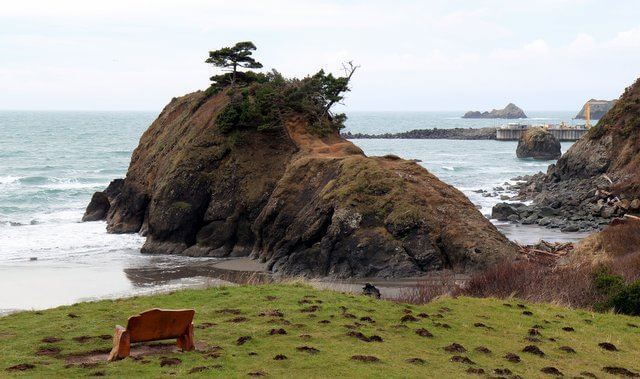
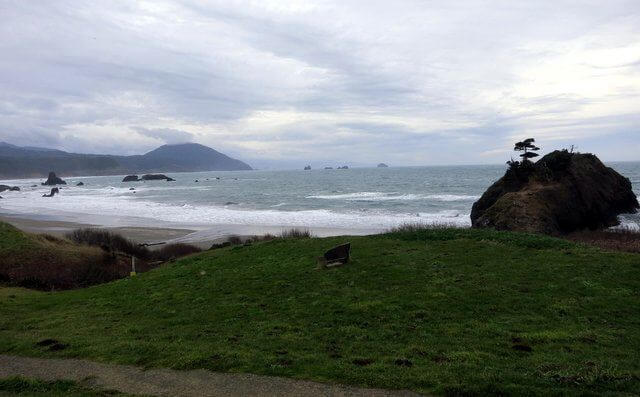
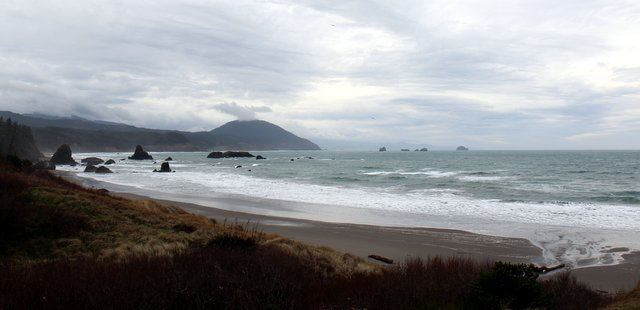
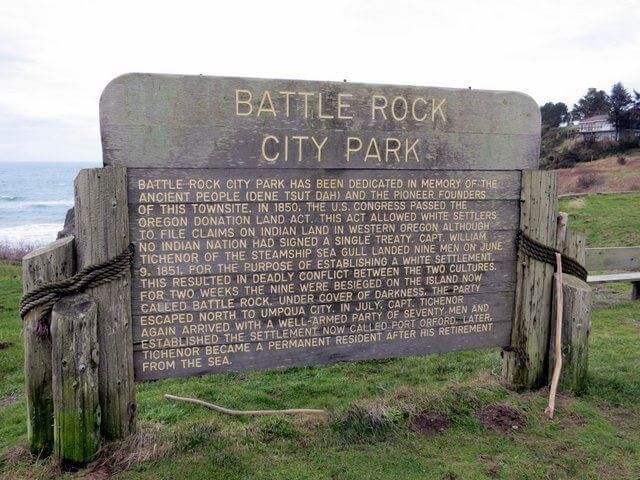

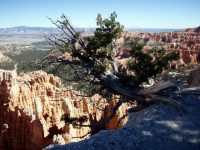


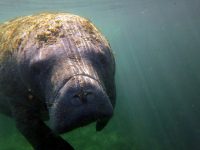





lovin’ the history lesson – 1/2 the fun of hittin’ your pages is learning something new. thnx!
Pingback: @TheGuy37796972
Pingback: Kellie Netherwood (@DestnUnknown)
Pingback: Steve Juba (@solotravelclubs)
Pingback: Steve Whitty (@stevo120665)
Pingback: Edwina Parker (@YapaNow)
Pingback: Carol M Biederman (@lgdealstoday)
I really liked reading about the history of the park. Such a fascinating story and a bit of the past to inject a life into it. Really enjoyed reading this.
Where do the local Natives live these days?
Do they have a museum, hotel, theme park or something similar to popularize and share their culture and love of Life? I came to visit my my mom here – I love the Nature here.
The tribes that inhabited the coast were force marched to a few reservations, Confederated Tribes of Siletz Indians, Grand Rhonde, warm springs and many more groups of tribes. look us up on google, we are still here.
Me and a friend spent the night hanging out and chillin on this rock and about 9 months later I’m learning some horrible stuff went down.
I am a decedent of the Tichenor family, from the James branch where William and James had the same father, David. Of course it was a surprise to be on the beach at Port Orford and to see the Tichenor name posted on a large sign. The marriage with a Heddon was all it took to convince me that William, born in New Ark (Newark, NJ) was connected. Having dinner at RedFish Restaurant just a coin toss from Battle Rock (also Tichenor Rock) was a wonderment. I do not agree in any way with the 1850 Oregon Donation Land Act passed by the US Congress, that which doomed indigenous people to conflict just to hold onto their civilization. It did not hold up, the survival of indigenous people. William Tichenor and I are distantly connected by blood but by no means deed. He was lucky to survive. More so the other “settlers”. Next time through Port Orford I’ll visit the Tichenor Cemetery for a contemplation of history.
my family came out of that area, and im told a different story in how we were treated (i am a living tribal member)
It was fun to remember the story of the Battle of Battle Rock. I lived in Port Orford for a couple of years and graduated from POHS class of 1955. Back in the Good Old Days.
That was my Nation…